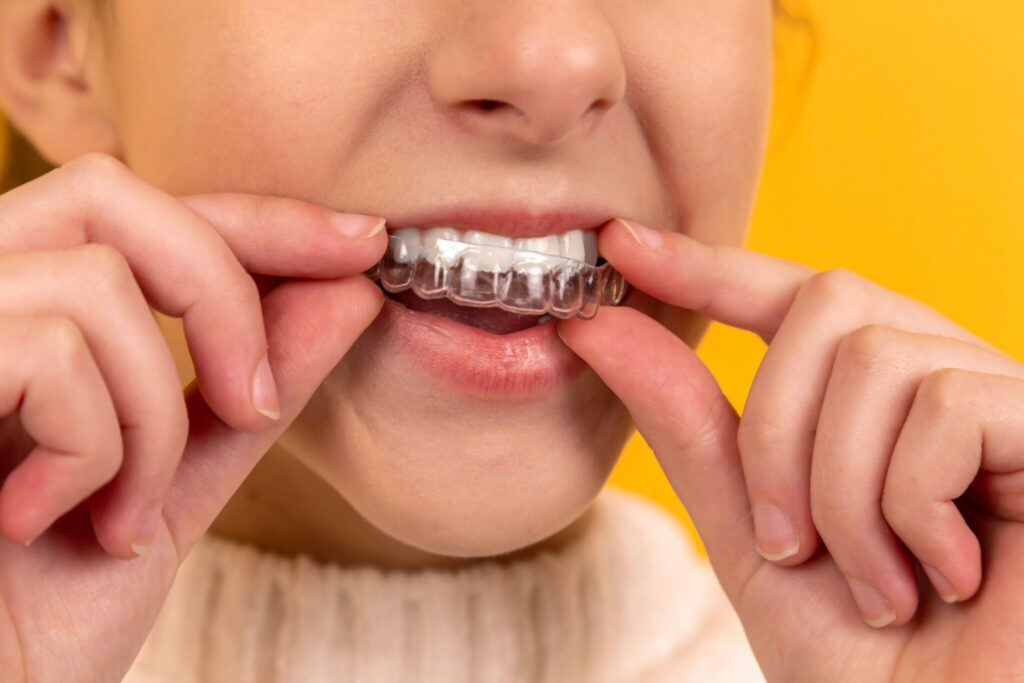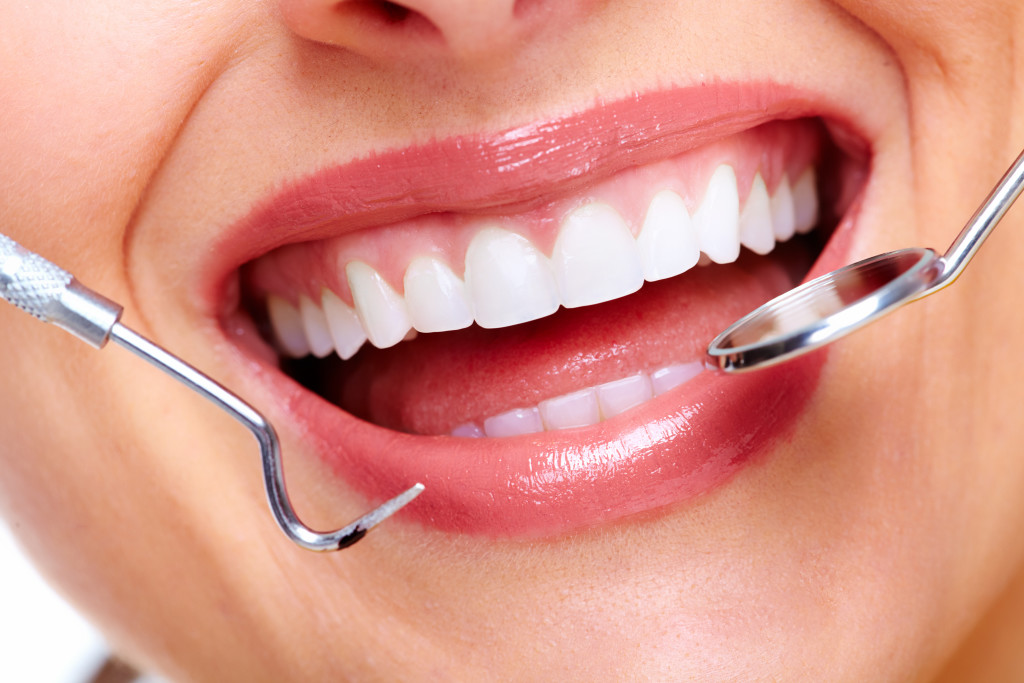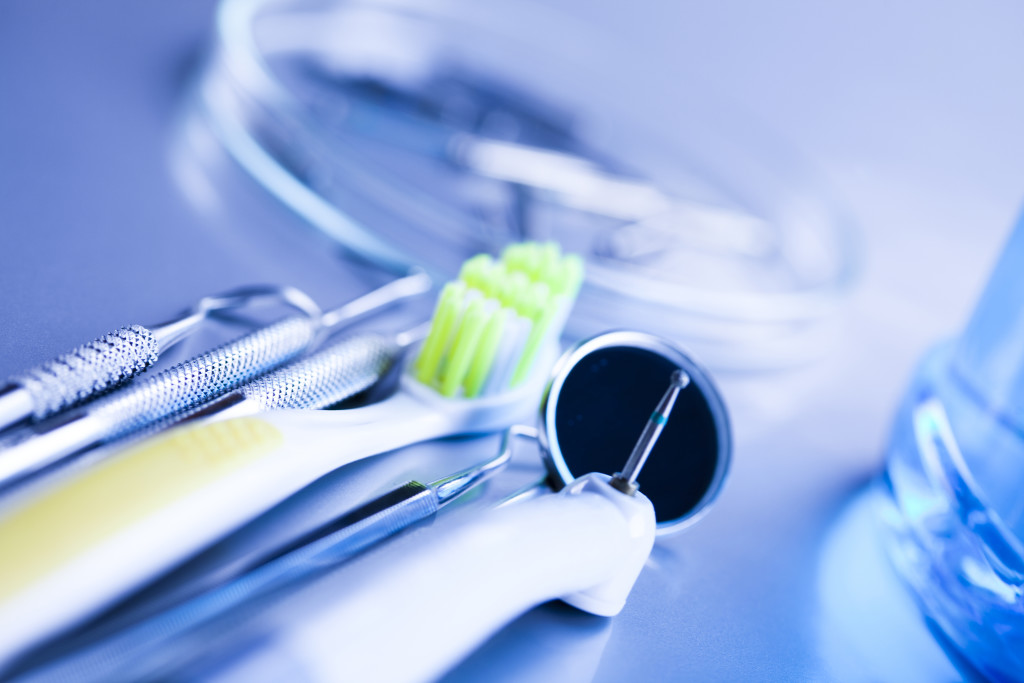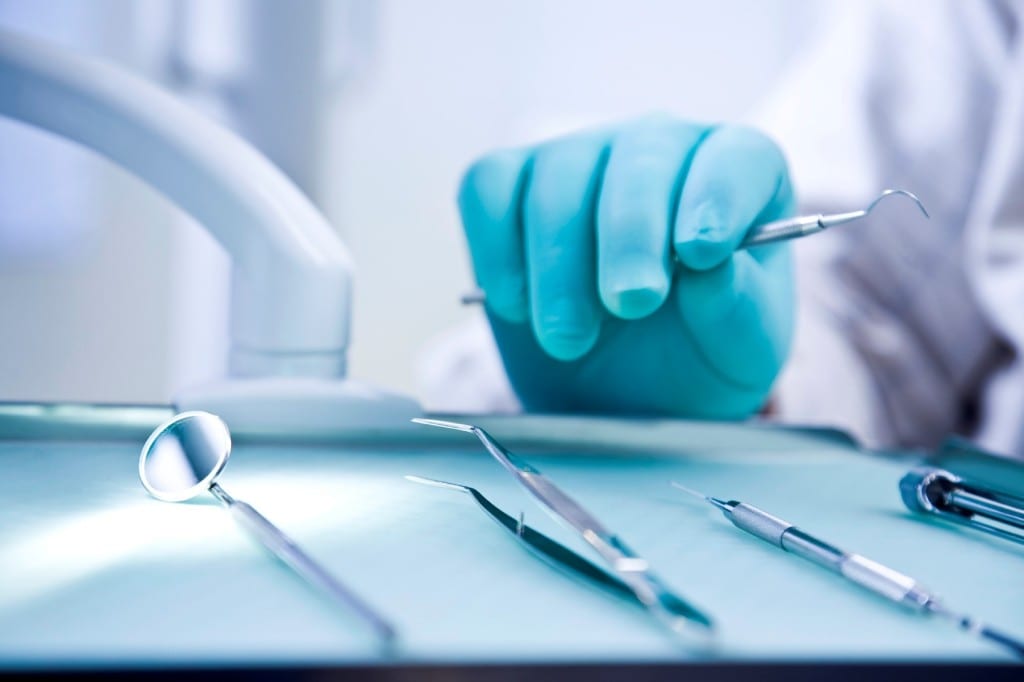
Improper occlusion can adversely affect the health of the oral cavity and even posture, so it needs correction. However, orthodontic treatment is also used for aesthetic purposes in case of crooked teeth or cracks.
When does bite need correction?
Bite pathology is mostly determined by the ratio of the lateral group of teeth, not the front, so some patients may not even know that they have a bite pathology. It is determined by visual inspection, evaluation, and analysis of X-ray examination data.
Types of bite correction
Braces
All braces consist directly of braces, which are fixed with a specially designed material to the tooth, and an arc, which puts pressure on the teeth and thus pushes the dentition.
Types of braces:
- metal braces: consist of a metal arch, metal brackets, which change the position of the teeth, and elastic ligatures (rubber bands), which fix the arc in the bracket;
- ceramic braces: consist of a metal arch, ceramic brackets, and transparent, aesthetic rubber bands, which also contain an arc in the groove of the bracket;
- sapphires (clear) braces are made of synthetic sapphires, are hypoallergenic and do not react chemically with tobacco or alcohol, and do not crumble.
Ceramic and sapphire bracket systems are almost invisible to others, especially from afar. Only a metal arch will indicate that the person is undergoing orthodontic treatment.
However, it should be understood that ceramics or sapphire – material is not as strong as metal, and therefore such braces are less reliable.
Contraindications to braces
The bracket system is installed exclusively on a healthy oral cavity. The fact is that braces impair oral hygiene and, if a person has a disease, their condition will worsen.
Relative contraindications to braces are diseases of the hard and soft tissues of the oral cavity, such as caries, pulpitis, periodontitis. Therefore, you must first eliminate the disease and then install braces.
Absolute contraindications to the installation of braces can include severe forms of periodontal disease, when the bone tissue around the teeth is partially detached, volumetric defects of the dentition, severe forms of bruxism.
Clear aligners
Clear aligners are removable transparent caps made of polycarbonate, which causes constant pressure on the teeth, which gradually brings them to the desired position.
Before starting orthodontic treatment with aligners, the doctor makes analog or digital impressions of the jaws. These images are uploaded to a computer program that simulates the result of a correct bite. The program predicts the number of caps required to complete the result, ie there can be 20, 30, or even 100 caps, depending on the complexity of the clinical case.
Orthodontic treatment with aligners
The first caps should be worn for a month, and then change them every two weeks.
Clear aligners can treat all pathologies of the bite, except for severe forms.
This approach aims to ensure that the patient follows the doctor’s recommendations, as aligners will only work if the person wears them for about 22 hours a day. They are removed only for hygienic procedures and meals.
Advantages of clear aligners:
- aligners are invisible for others, which no bracket system can provide;
- they do not require a special installation in the orthodontist’s office – the patient can put on or take them off on their own;
- aligners do not require mandatory brushing after eating;
- there is no discomfort when eating because at this time the caps are removed;
- care of aligners is very simple.
Disadvantages of clear aligners:
- expensive treatment, compared with almost all types of braces. This is because you immediately buy a set of caps that you change every two weeks;
- aligners are a removable type of orthodontic equipment that has disadvantages. That is, liners work only when worn, which is a problem for undisciplined patients. Sometimes patients do not finish treatment, constantly losing or forgetting to wear caps;
- the bracket system is installed directly in the oral cavity and acts constantly, and the doctor can monitor the process;
- aligners are worn for a longer period of time than braces. Caps are used to correct minor tooth deformities or occlusal pathologies.
Despite all the attractiveness of clear aligners, with difficult occlusal pathologies, they are powerless. While braces can correct almost any occlusion disorder.
Picture Credit: Unsplash






